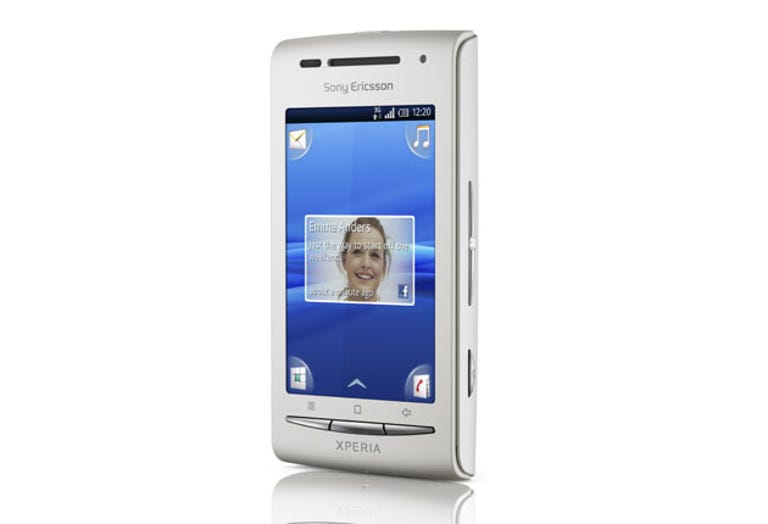 Why You Can Trust CNET
Why You Can Trust CNET Sony Ericsson Xperia X8 review: Sony Ericsson Xperia X8
The Sony Ericsson Xperia X8 is a small Android smartphone that is simple to use and packed with a number of features. It is just a shame that it cannot be updated to Froyo and beyond.
Sony Ericsson has released its budget Android smartphone, the Xperia X8. This smartphone doesn't offer much competition against the likes of similar specced model phones from HTC and LG, but it has its charms.
The Good
The Bad
The Bottom Line
Note: the Xperia X8 is exclusive to Optus on an AU$249 prepaid plan.
Design
Measuring at 99x54x15mm, this phone fits comfortably in the palm. Its lightweight profile is made mostly out of hard plastic. The two-toned colour casing adds a bit of flair and class, and allows users to add a bit of customisation.
The Xperia X8 has three slit-like buttons (Menu, Home and Back) below the 3-inch capacitive touchscreen. The volume key and dedicated camera hotkey are located on the right side, while the power/screen lock button, USB port and 3.5mm headphone jack are located on top.
Features
On launch, the phone used an older Android version (1.6). Sony Ericsson has since updated the OS to a later version (2.1); however, the company stated that it will no longer be upgrading the current Xperia range beyond the current update. This means that there will be no Adobe Flash support, Wi-Fi tethering or further speed improvement on the handset.
Sony Ericsson has placed its own user interface on top of the Android OS. The four customisable corners allow users to personalise their home screen and launch certain applications on the fly, while widgets can be accessed by sliding your finger. The X8 only allows one widget per page and does not seem to have a limit. An issue exists when it comes to reaching the end of the widgets — to get back to the first widget you need to manually scroll back.
The 3-inch, 320x480 HVGA screen was clear and responsive. The virtual QWERTY keyboard is a bit cramped, but you can easily get that extra space by rotating the phone to landscape. The X8 has no multi-touch — to zoom into a photo you need to press and hold the image until a zoom in/out toolbar appears or double tap on it.
One of the major features of the X8 is Timescape — a program that is able to display Facebook, Twitter, messages and missed calls from friends in a Rolodex-like form.
Performance
The 600MHz Qualcomm processor works for simple tasks, but it slows down once graphic-intensive games, such as the pre-installed Tower Bloxx, are run.
Clearly, 128MB of memory is not enough to store multimedia files, so Sony Ericsson has bundled a 2GB card with it. Transferring data to and from a PC is a drag-and-drop affair, making it easy to move content around without installing any additional software. The music player displays the album artwork, artist and the title of the song, and can show related content such as YouTube videos by pressing the Infinity button. The bundled headphones were decent, and we were pleasantly surprised with the loudness of the external speaker.
Xperia X8 comes with Bluetooth and is also Wi-Fi enabled. The handset also comes with A-GPS, which can be used with programs such as Google Maps Navigation.
The 3.2-megapixel camera produced very mediocre shots. Images taken during the day lacked the "wow" factor, while night shots were tricky as it does not have any built-in flash. The video camera function only offered two options — Normal and "For MMS".
The 1200mAh battery promises a talk time of up to five hours and 40 minutes and close to 20 days of standby time. It lasted for a day and a half within normal use — we called a couple of contacts, sent text messages and pushed content to the handset every hour.
Conclusion
The Xperia X8 is a smartphone that is worth checking out thanks to its attractive price tag and solid features. However, the operating system is a bit behind compared to a lot of handsets coming out this year. Users who are looking for a phone that can be updated in the next coming months should think long and hard before taking the plunge.
